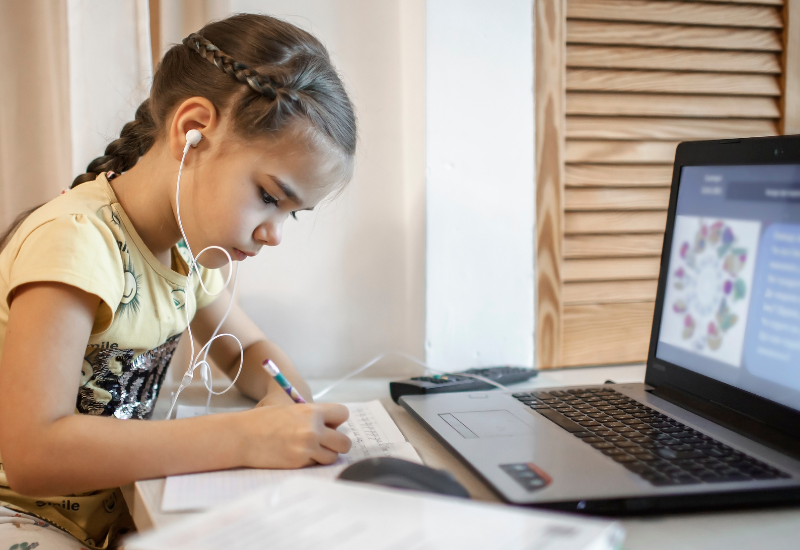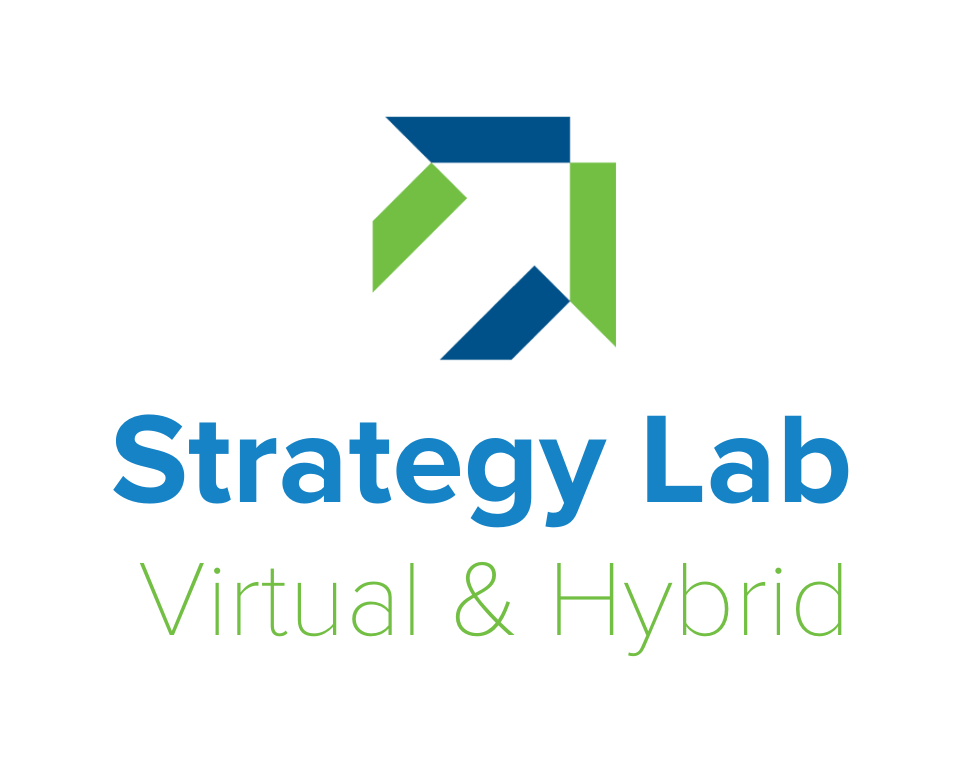Key Takeaways
In order to support students during virtual learning experiences, educators should create opportunities to:
Set the stage together, using “live time” with teachers and peers to give learners common content and resources, and modeling strategies to engage in successful self-directed learning.
Tap into “on-demand” connections and tools that help students reach their teachers, other trusted adults, and peers to enable extended learning and access “anytime/anywhere” help.
Address specific social-emotional learning (SEL) needs by ensuring students have targeted learning opportunities, tools, and resources to support them and are able to build social connections with others.

What is the problem?
Students learning virtually – whether on snow days, in online courses, or as part of a hybrid learning model – are working through the challenges they face without the added benefit of close physical proximity to a teacher. This requires students to develop new strategies as independent learners, building skills to prioritize and pace their work, access the right content, track progress, and navigate their way to the right supports when they get stuck.
Why is it important?
A student’s ability to engage in any virtual or hybrid learning experience, no matter how well designed, is affected by their resources, support structures, learning environment, and state of wellbeing.
The research says...
TLA's review of the available research underscores the importance of creating a foundation for student-driven, self-directed learning. Setting students up for success across their learning experiences – whether in-person or virtual – is essential for engagement in quality instruction. Educators must model behaviors and explicitly establish expectations and supports that address the unique challenges of virtual learning. Specifically, the research suggests…
Learning online is independently directed and offers students many opportunities to make choices; even in a full synchronous setting, students must exert effort to attend instruction and engage appropriately. Because of this level of independent work, students will likely need more support to trigger active engagement, reflection, self-monitoring, and self-regulation.
Students exhibit differences in participation in, perceptions of, and motivations during online experiences based on culture, gender, and age. Educators should be aware of this facet of their experience, and proactively consider how virtual learning will be interpreted by students coming from a variety of backgrounds, identities, and contexts, including assumed familiarity with modality and background materials, desired relationships with peers, caretakers, and instructors, and understanding of norms for communication and engagement.
Teachers can support students by helping them understand how to effectively direct their own learning as well as proactively addressing potential feelings of disconnection caused by physical distance.
How: Solution
Students’ ability to self-direct their learning and seek help when needed (that is, to take initiative, set goals, and identify the right resources, strategies, and supports) is especially critical to success when working in a virtual or hybrid learning environment. The three approaches outlined below – particularly when they are combined – can help support students in navigating these challenges and set them up for success by helping students to spend less time wayfinding and more time diving into and mastering content.
Setting the Stage Together
Teachers can help set students up for success by creating specific supports and touchpoints for virtual students during live online classes. While working asynchronously (i.e., at a student’s own pace through a playlist or independent exploration and practice) can facilitate greater flexibility for both students and instructors, spending some deliberate time synchronously (even if working at a distance or in different locations) is a key strategy that helps students feel connected to their peers and educators and, further, creates a shared understanding of the vital supports students can turn to as they direct their learning.
These synchronous supports need not be in the form of full lesson periods; briefer common check-ins and kick-offs (and, to some extent, common virtual organizational tools like virtual notebooks) can work too. By creating time together for planning, expectation-setting, modeling desired independent-learning behaviors and norms, and implementing strategies that replicate a bit of what more traditional “in-person” supports look like, educators can help students organize their week, connect around goals, seek guidance, and align on expectations for asynchronous work ahead. Further, it also allows everyone to build stronger relationships on a consistent basis, helping the full virtual or hybrid learning community persevere through challenge points.
Strategies/Resources:
The following are some synchronous supports offered by several virtual schools that support successful implementation and give students the opportunity to connect “in person.”
Offering On-demand Connections and Tools
Independent work is a great tool for helping students learn at their own pace and explore personalized pathways and content. Asynchronous coursework can also allow students juggling multiple needs (e.g., daytime jobs or internships, household responsibilities, competitive sports, performing arts, care of a family member) to structure their schedule in a way that works best for them. However, given the complexity and flexibility involved in independent work, it can be easy for students to find themselves off-track. It is important to offer specific on-demand supports that students can tap into as needed, allowing them to access resources, teachers, mentors, and peers – anytime and anywhere – to work through challenges, develop plans, and take a personalized approach to wayfinding.
Strategies/Resources:
Below are some strategies used by several virtual schools to ensure their students have access to appropriate support during self-directed learning time.
Addressing Specific Social-Emotional Learning (SEL) Needs
Learners working virtually can struggle to feel connected to others and may find it difficult to persevere through challenge points. Further, students who attend fully virtual schools may miss out on more traditional community components that build camaraderie around shared interests and experiences that allow them to connect authentically, such as clubs, sports, and a “homeroom” environment. Explicitly building social connectedness, opportunities to build relationships with trusted adults, and SEL strategies for self-direction is even more crucial during virtual and/or hybrid learning. Educators should offer specific SEL opportunities to connect and build relationships, mindsets, and skills.
Strategies/Resources:
The following are some specific strategies used to ensure students learning virtually have the opportunities they need to develop social and emotional skills, build greater connection to their community, and access holistic support.
Take it further
Explore these additional guides to learn more about student engagement, virtual assessments, and multimodal learning experiences that support all students.
Additional Virtual, Remote, and Hybrid Learning Resources:

If your school system has a virtual or hybrid school, consider joining our latest cohort-based learning opportunity, Strategy Lab: Virtual & Hybrid. This philanthropically-funded experience will bring 10 to 12 school system teams together to turn their virtual or hybrid schools into exemplars of change, like the ones highlighted above. Through one-to-one coaching, cross-cohort collaboration, and expert support, school systems will be guided through an inclusive design process to explore and iterate on improvements to their virtual and hybrid models. This initiative is offered at no-cost for selected districts.
For details about the cohort experience and expectations, explore our one-pager for school systems and read our announcement blog about the Strategy Lab.
To apply, complete this application.
Still have questions? Reach out to [email protected].